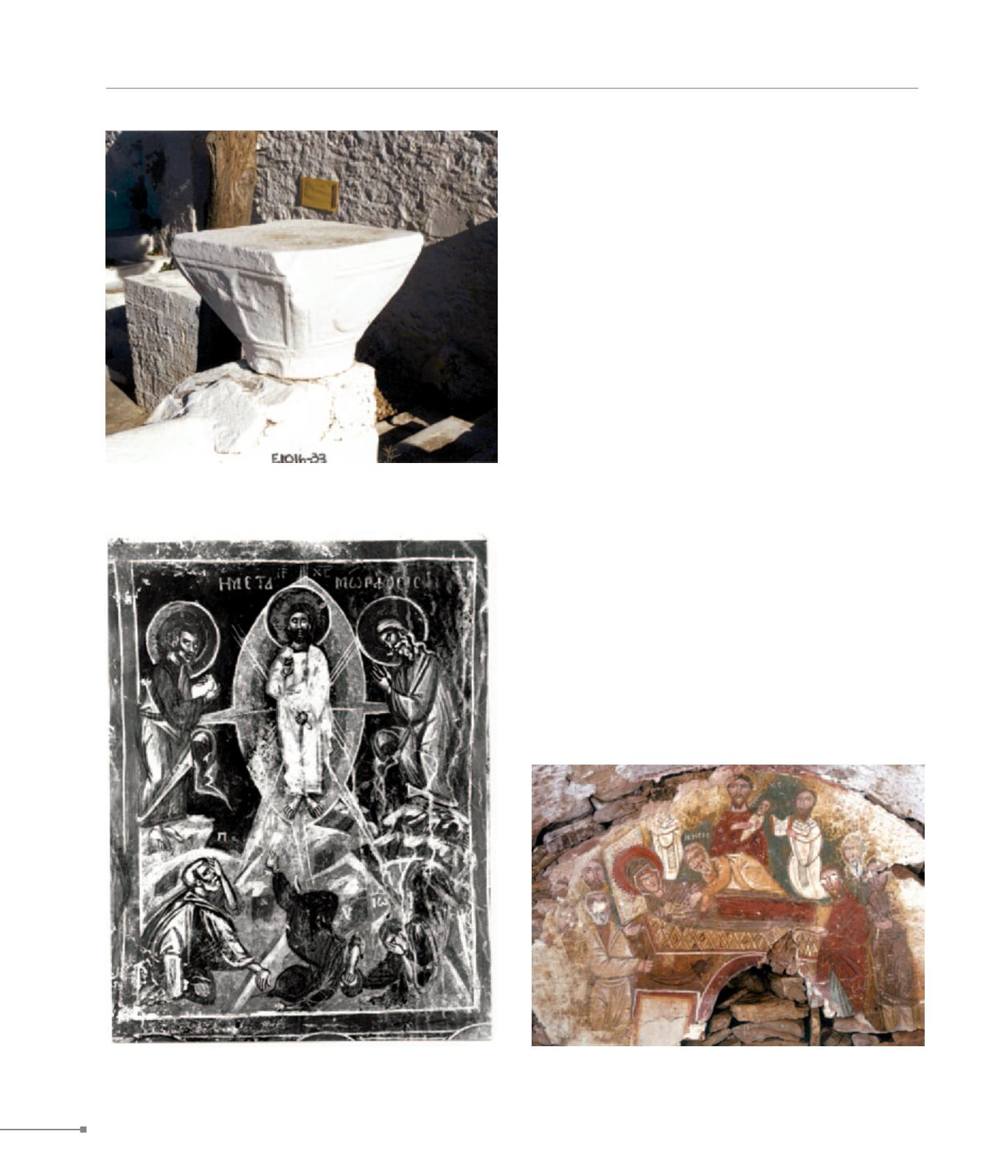
Tilos.
Tilos.
THE ISLANDS
402
606. Telos, Aghios Nicholaos at Misoskali, wall painting (Τήλος, Άγιος
Νικόλαος στο Μισοσκάλι, τοιχογραφία)
606. Telos, Saint Nicholas at Cheili, wall painting (Τήλος, Άγιος Νικόλαος
στα Χείλη, τοιχογραφία)
on the island. Under the Knights’ domination (1315-1522), two
of the five fortified towns of Nisyros were inhabited, namely
Pantoniki (Emporios) and Nikia (7), while Palaiokastro (3) and
Argos (6) were deserted, though their fortifications were still
preserved. The Hospitaller castle towering over Mandraki (1),
the fifth fortified town, surrounds the Speliane monastery. The
double-sided votive icon of Panagia and Saint Nicholas, work
of an exceptional 15th c. artist, is venerated by the Nisyrians.
605. Nisyros, Archaeological Collection, Early Christian capital (Νίσυρος,
Αρχαιολογική Συλλογή, παλαιοχριστιανικό κιονόκρανο)
606.
Tilos.
Tilos is a small island between Rhodes and Kos. There are
only two basilicas from the Early Christian period that have not
been excavated: Aghios Panteleimon at Livadia (3) and Saint
Constantine at Megalo Chorio (1). There are no remnants
from the Mid-Byzantine period, while from the 13th c. onwards
about 100 Late Byzantine churches have been detected, a dis-
proportionate number compared with the island’s size and fi-
nancial condition. Besides the monastery catholicon of Aghios
Panteleimon (3), a domed, cross-in-square church, all other
churches are of the barrel-vaulted, single-nave type. In some
cases churches feature a double-apsed bema, as well as a
kind of barrel-vaulted narthex. Forty of these churches retain
remains or an extensive part of their wall-painted decoration.
Aghia Varvara at Sannianoi, Saint Nicholas and Soter at Me-
saria (2), Aghia Triada at Spitakia, Saint Nicholas and Saint
Paul at Misoskali, Saint John at Avalas, Saint Anne at Kastellos


